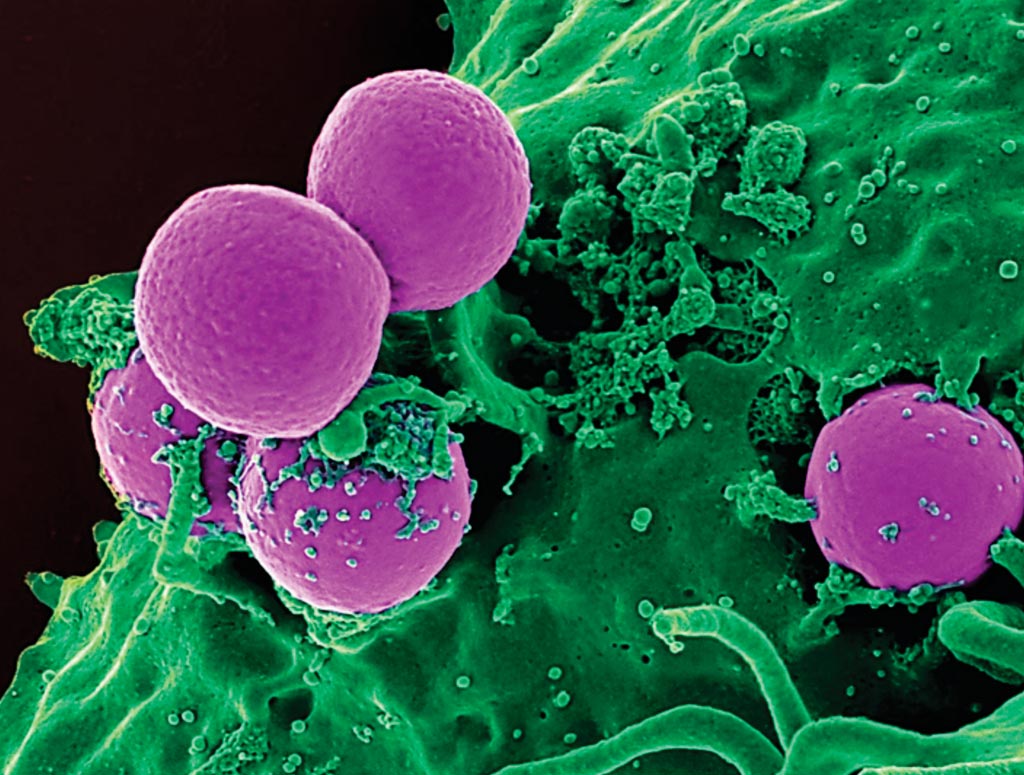DNA Sequencing of MRSA Predicts Patient Survival
By LabMedica International staff writers
Posted on 23 Aug 2017
Methicillin-resistant Staphylococcus aureus (MRSA) is a bacterium that has become resistant to most types of antibiotics, and up to 20% of patients with invasive infections die. Although S. aureus is a common bacterium that lives on the skin, if it gets inside the body through a cut it can cause septicemia.Posted on 23 Aug 2017
Sequencing the DNA of the MRSA superbug can accurately identify patients most at risk of death and could help medical professionals develop new treatments as they move towards personalized medicine. This potentially life-threatening infection affects thousands of patients every year in the UK. There are two main strains of MRSA found in UK hospitals, called CC22 and CC30.

Image: A scanning electron micrograph (SEM) of a human neutrophil ingesting methicillin resistant Staphylococcus aureus (MRSA) (Photo courtesy of US National Institute of Allergy and Infectious Diseases).
A team of scientists led by the Milner Centre for Evolution at the University of Bath (UK) were able to study blood samples from around 300 patients with septicemia, looking at how the different MRSA strains behaved and assessing their lethality. DNA sequencing was performed alongside measuring the toxicity, or ability to kill human cells, of the MRSA strains as well as their ability to form dangerous biofilms. Biofilms form when groups of bacteria secrete proteins that stick them together and coat surfaces in slime. Biofilms makes it easier for bacteria to evade the patient's immune system and can block the action of antibiotics. They are a particular problem in patients using catheters where up to half of patients can get an infection.
The scientists examined the genetic code of the infecting MRSA bacteria, and paired this information with individual risk factors for each patient, including age, presence of any other illnesses, and noted whether the patient was still alive after 30 days of the infection and if deceased whether MRSA contributed to their death. They found that for CC22 strains, both their toxicity and biofilm forming abilities played a significant role in whether the patient survived their infection. However these did not appear to be involved in the patient outcome for those infected with CC30 strains, meaning this strain is killing people in a different way.
Ruth C. Massey, PhD, a senior lecturer who led the study, said, “Unfortunately 20% of patients with septicemia die and cases are on the increase which suggests that existing infection control and treatment options are insufficient to tackle this important health problem. We've identified that MRSA kills people in different ways depending on the strain, and that the low toxicity CC30 strains are killing patients in an as yet unknown mechanism. It could be that they are better at evading the immune system.” The study was published on August 7, 2017, in the journal Nature Microbiology.
Related Links:
University of Bath













